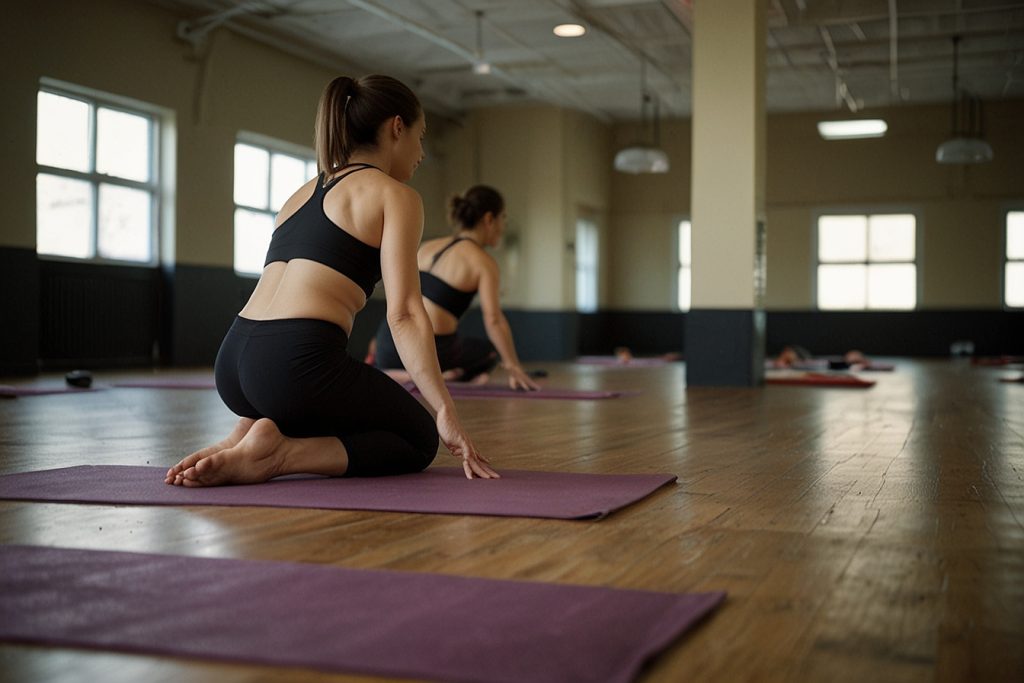Bikram yoga is a unique style of yoga that has gained immense popularity worldwide. It is a form of hot yoga that is practiced in a heated room with a specific sequence of 26 postures and two breathing exercises.

This practice is named after its founder, Bikram Choudhury, who developed it in the 1970s. The heated room is an essential part of Bikram yoga, as it allows the body to stretch, detoxify, relieve stress, tone, and heal chronic pain such as arthritis.
Jane Benson from Bikram Yoga Mornington, had this to say “One of the unique features of Bikram yoga is the specific sequence of 26 postures, which are performed in the same order every time. This sequence is designed to work every part of the body, from the toes to the head”.
The postures are challenging and require a lot of strength and flexibility, making it a great workout for both the body and mind.
The heated room in Bikram yoga is another unique aspect of this practice. The room is typically heated to around 105 degrees Fahrenheit with a humidity level of 40%.
The heat helps to warm up the muscles, making them more pliable and reducing the risk of injury. It also helps to increase blood flow, which can improve circulation and aid in detoxification.
Fundamentals of Bikram Yoga
Bikram Yoga is a unique form of yoga that is characterized by its specific sequence of 26 postures and two breathing exercises. It is a challenging practice that is performed in a heated room, typically at a temperature of 105 °F (41 °C) with a humidity of 40%. In this section, we will explore the core characteristics, physical and mental benefits, and the Bikram Yoga sequence.
Core Characteristics
Bikram Yoga is a discipline that requires a high level of commitment and dedication. The practice is designed to challenge your body and mind, and it requires a lot of focus and discipline to succeed.
The heat in the room helps to warm up your muscles and increase your heart rate, which makes it easier to move through the postures.
The practice is designed to help you build strength, balance, and flexibility, and it can be a great way to reduce stress and improve mental clarity.
Physical and Mental Benefits
Bikram Yoga offers a wide range of physical and mental benefits. The practice can help to improve your overall health and wellbeing, and it can be a great way to reduce stress and anxiety.
The heat in the room helps to warm up your muscles and increase your heart rate, which can help to improve your cardiovascular health.
The practice can also help to improve your strength, balance, and flexibility, which can help to reduce your risk of injury.
Bikram Yoga Sequence
The Bikram Yoga sequence is a set of 26 postures and two breathing exercises that are performed in a specific order. The sequence is designed to challenge your body and mind, and it requires a lot of focus and discipline to succeed.
The sequence typically lasts for 90 minutes, and it is performed in a heated room.
The sequence begins with pranayama, which is a breathing exercise that helps to warm up your body and prepare you for the postures.
The sequence then moves through 12 standing poses and 12 floor poses, with each pose and exercise performed twice.
Some of the most popular postures in the sequence include the Half Moon Pose, Eagle Pose, and Standing Bow Pose.

Practical Considerations
Getting Started
If you’re new to Bikram yoga, it’s important to start slowly and not push yourself too hard. That’s why you should go with an expert at Bikram Yoga Mornington.
You can expect to sweat a lot during a Bikram yoga session, so it’s important to bring a towel and water to stay hydrated.
You may also want to invest in a yoga towel to help prevent slipping on your mat.
Health and Safety
While Bikram yoga can have many benefits, there are also some risks to keep in mind.
The heat and humidity in the room can lead to dehydration, which can be dangerous if not managed properly.
It’s important to listen to your body and take breaks as needed. If you start to feel dizzy or lightheaded, it’s important to stop and rest.
In addition, there is a risk of injury when practicing Bikram yoga.
It’s important to work with a qualified instructor who can help you adapt the poses to your individual needs and abilities.
Bikram Yoga in Culture and Controversy
Bikram yoga has been in the news in recent years due to a number of controversies.
These include lawsuits against its founder, Bikram Choudhury, for sexual assault and copyright infringement. Despite these issues, many people still enjoy the practice of Bikram yoga.

Some celebrities have also endorsed Bikram yoga, which has helped to raise its profile in popular culture. However, everyone’s experience with yoga is different, and what works for one person may not work for another.
If you’re interested in trying Bikram yoga, it’s important to do your research and find a qualified instructor who can help you get started safely. With the right guidance and precautions, Bikram yoga can be a rewarding and beneficial form of exercise.

